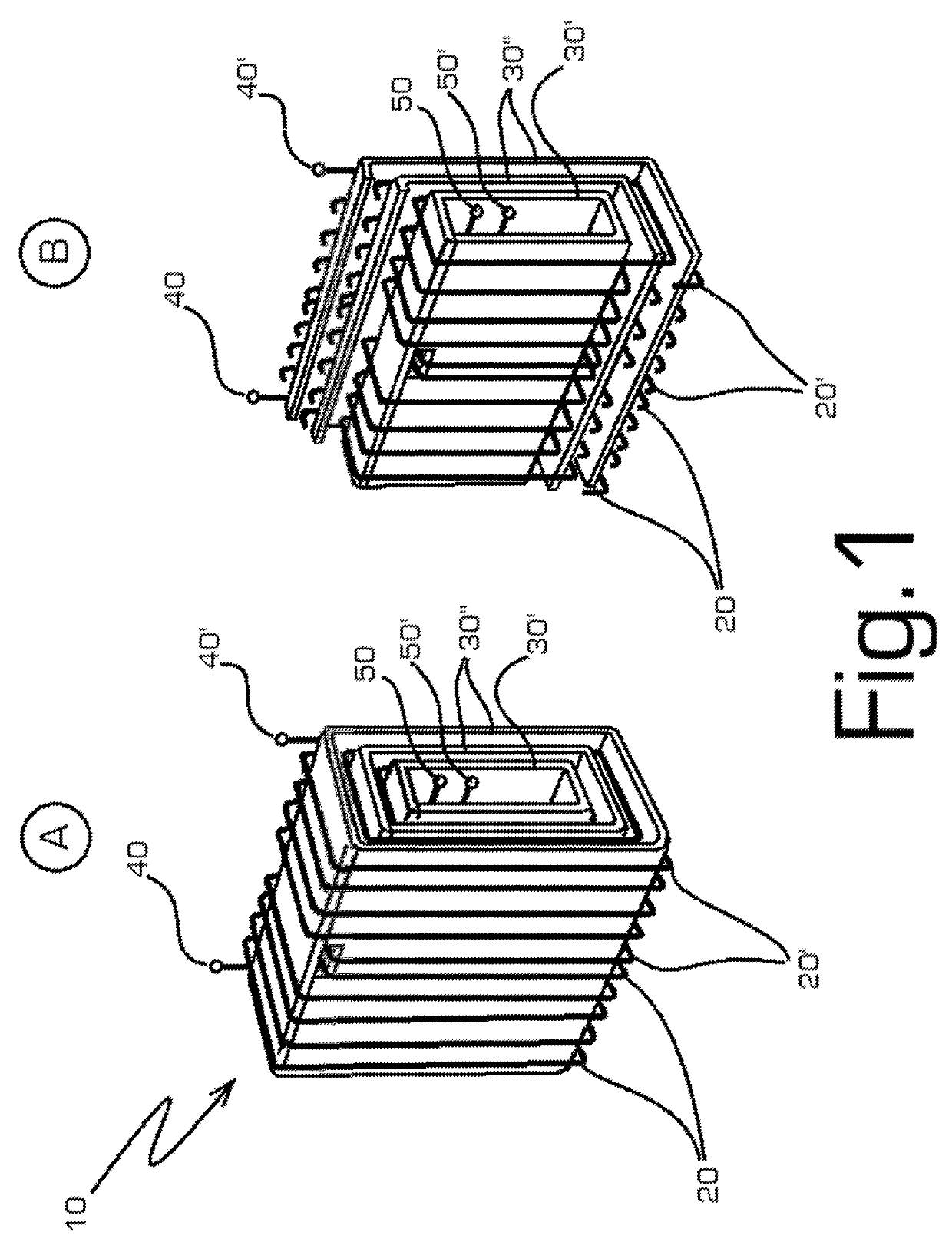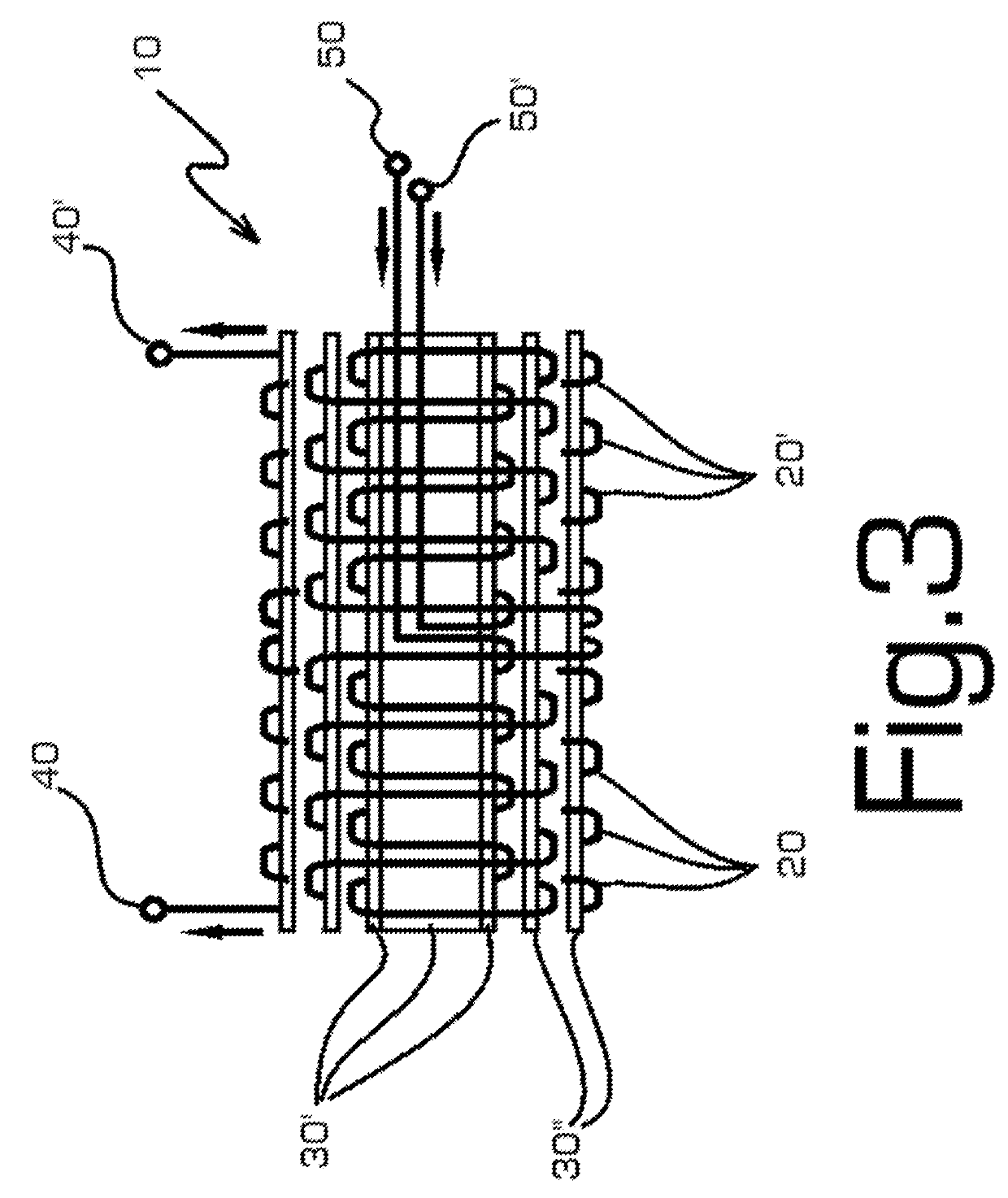Variable magnetic monopole field electro-magnet and inductor
a magnetic monopole field, electromagnet technology, applied in the direction of magnets, magnetic bodies, magnetic circuit shapes/forms/construction, etc., can solve the problems of limiting the number of turns, hysteresis losses, and weak Sturgeon's magnets, so as to eliminate the loss of hysteresis
- Summary
- Abstract
- Description
- Claims
- Application Information
AI Technical Summary
Benefits of technology
Problems solved by technology
Method used
Image
Examples
Embodiment Construction
[0107]A full and enabling disclosure of the present invention, including the best mode thereof, to one skilled in the art, is set forth more particularly in the reminder of the specification, including reference to the accompanying drawings, in which the reference numerals refer to various structural and other features of the preferred embodiment as follows:
[0108]10—General view of the preferred embodiment;
[0109]20—Winding layer sharing the same ferromagnetic interleaved lamination support with its mirrored counterpart #20′;
[0110]20′—Mirrored winding layer sharing the same ferromagnetic interleaved lamination support with winding #20;
[0111]30—Ferromagnetic lamination core support for each winding layer;
[0112]40—The external end lead of #20 winding layer;
[0113]40′—The external end lead of the mirrored #20′ winding layer;
[0114]50—The starting point lead of the winding #20;
[0115]50′—The starting point lead of the winding #20′;
[0116]60—Three position commutator panel;
[0117]70—Ferromagne...
PUM
| Property | Measurement | Unit |
|---|---|---|
| magnetic field | aaaaa | aaaaa |
| magnetic pressure | aaaaa | aaaaa |
| magnetic field | aaaaa | aaaaa |
Abstract
Description
Claims
Application Information
 Login to View More
Login to View More - R&D
- Intellectual Property
- Life Sciences
- Materials
- Tech Scout
- Unparalleled Data Quality
- Higher Quality Content
- 60% Fewer Hallucinations
Browse by: Latest US Patents, China's latest patents, Technical Efficacy Thesaurus, Application Domain, Technology Topic, Popular Technical Reports.
© 2025 PatSnap. All rights reserved.Legal|Privacy policy|Modern Slavery Act Transparency Statement|Sitemap|About US| Contact US: help@patsnap.com



